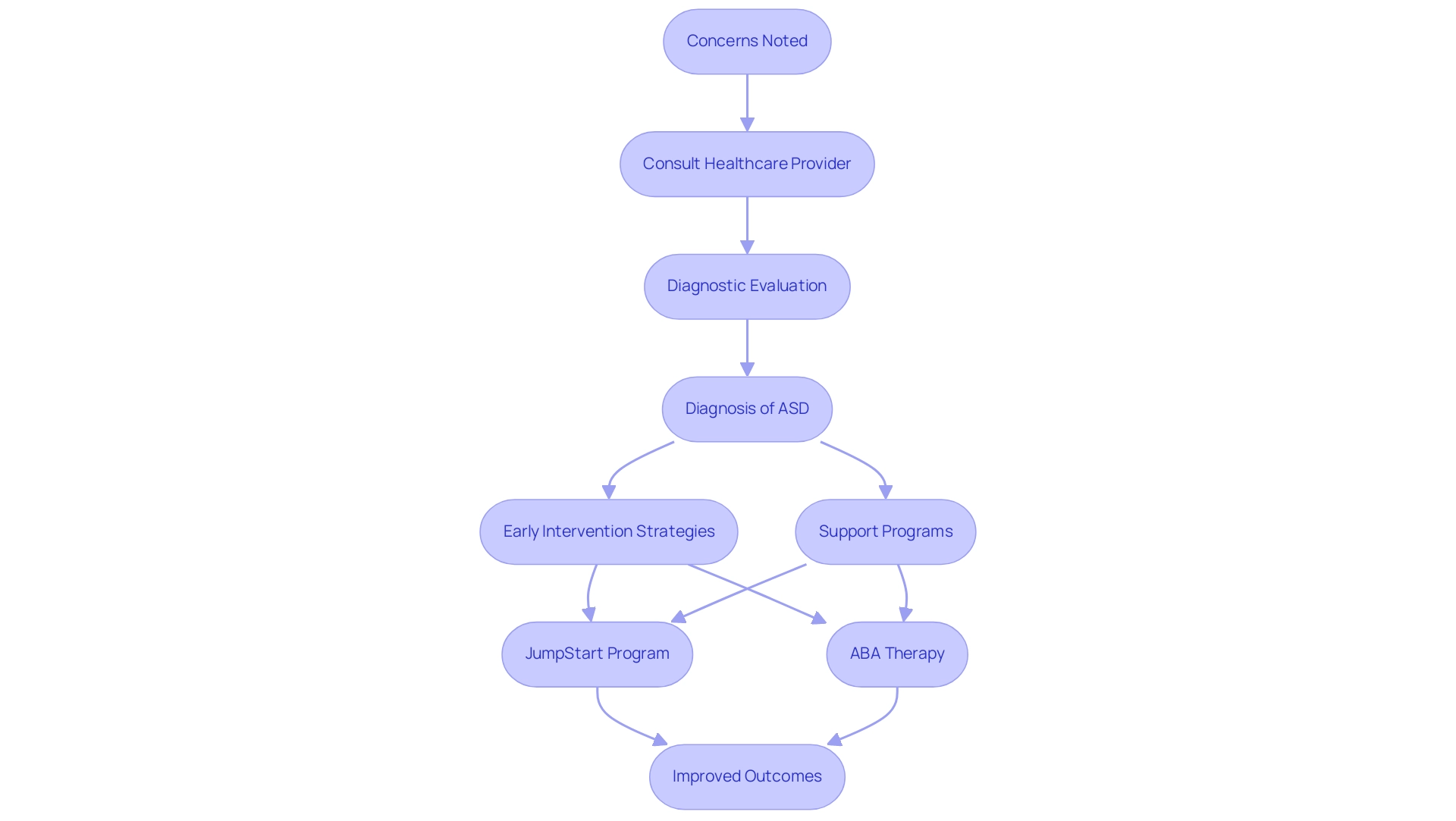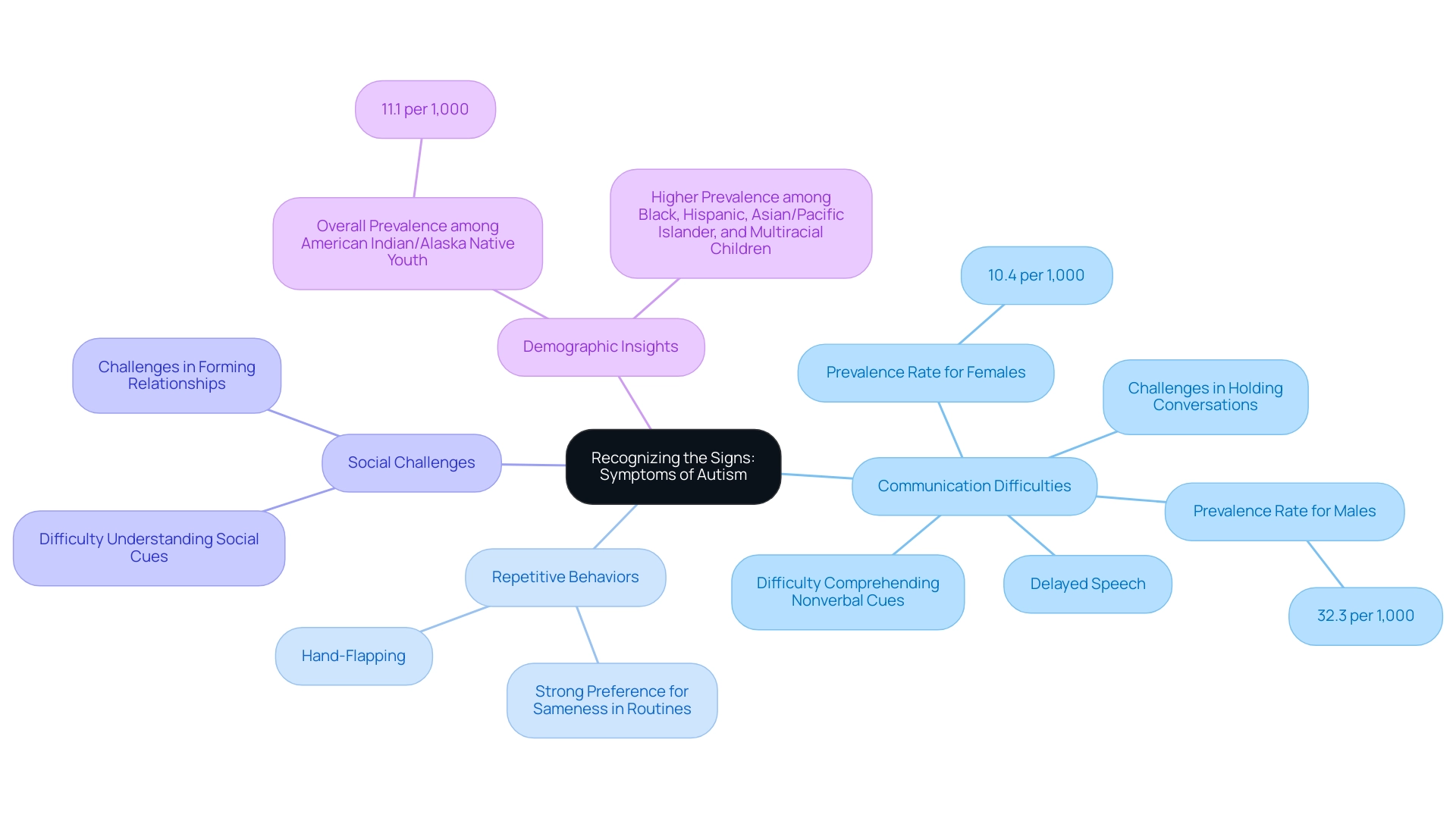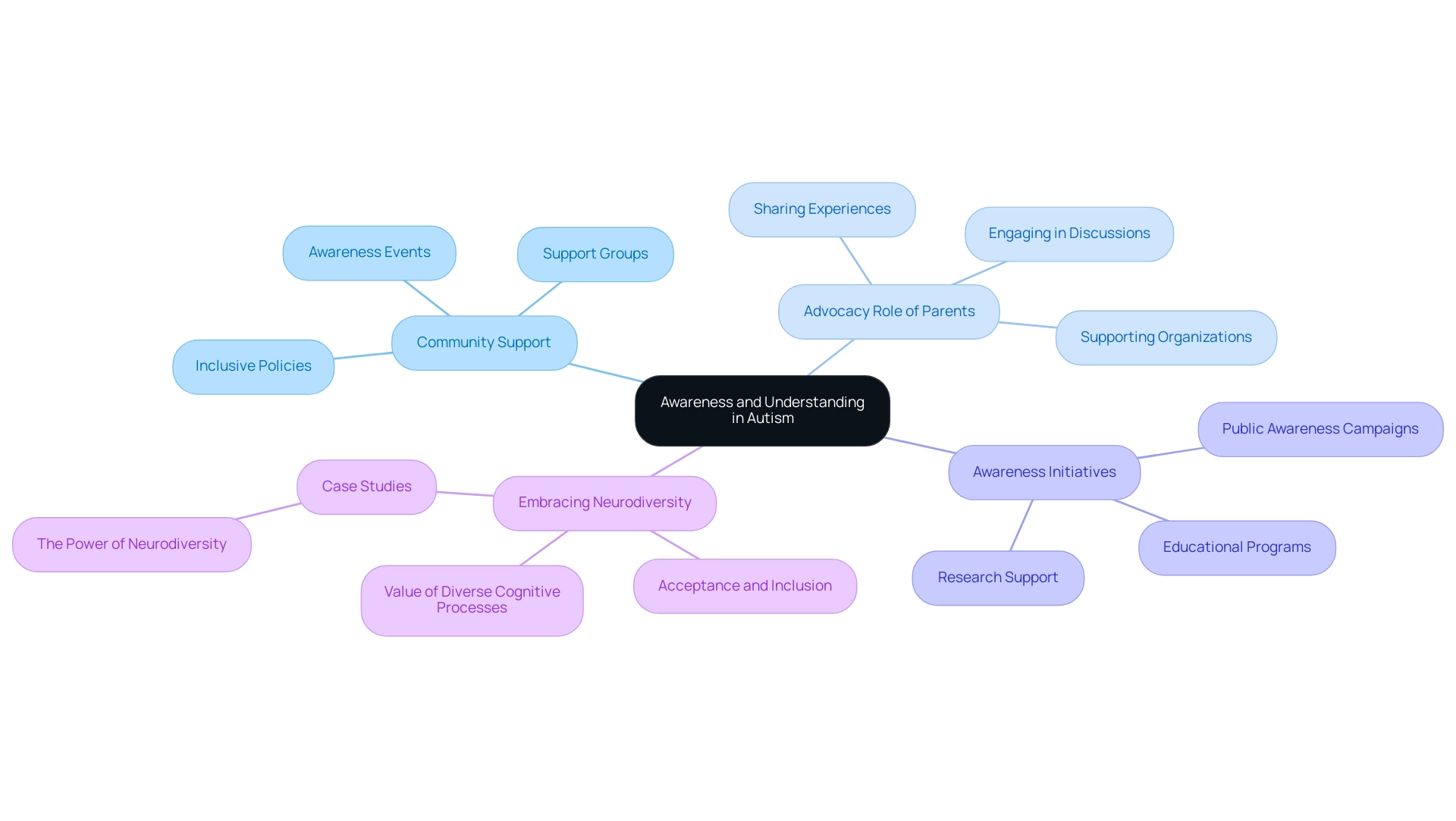Introduction
In a world where understanding and acceptance are paramount, Autism Spectrum Disorder (ASD) remains a topic that demands attention and awareness. With approximately 1 in 36 children diagnosed in 2024, the urgency for early diagnosis and intervention has never been clearer. This article delves into the multifaceted nature of autism, exploring its symptoms, the significance of early support, and the critical role that awareness plays in fostering inclusive communities.
By recognizing the signs and advocating for their children, parents can ensure that individuals with autism receive the necessary resources and support to thrive. Join in as we uncover the essential information and strategies that empower families to navigate the challenges of autism and promote understanding in society.
Defining Autism: An Overview of the Condition
Autism Spectrum Disorder (ASD) is a neurodevelopmental condition marked by difficulties in social interaction, communication, and repetitive behaviors. The term 'spectrum' reflects the wide range of symptoms and abilities observed in individuals with this condition, indicating that each person's experience is unique. Recent data reveals a sustained increase in the prevalence of ASD, with current estimates suggesting that roughly 1 in 36 youths are diagnosed with this condition in 2024. This highlights the necessity for increased awareness and comprehension of this intricate condition.
Early diagnosis and intervention are essential, as they can result in significantly improved outcomes for individuals with autism. For example, initial intervention strategies have been shown to increase a child's IQ by an average of 17 points. Programs like JumpStart at SARRC provide invaluable support for families awaiting a diagnostic evaluation or those newly diagnosed, offering practical strategies to address social communication challenges.
Recent research highlights that intervention, including Applied Behavior Analysis (ABA) therapy, which breaks down skills into manageable steps and reinforces positive behavior, is essential for effective treatment. Dr. Christopher J. Smith, Chief Science Officer at the Southwest Autism Research & Resource Center, highlights the significance of prompt action, advising parents to share any concerns or noticed differences with their healthcare provider. Additionally, SARRC's resources, such as their free screening program for individuals aged 12-36 months, offer parents guidance and support through the Family Resource Team to address developmental concerns. These efforts emphasize the crucial importance of timely intervention in assisting youngsters with developmental disorders reach their full potential.

Recognizing the Signs: Symptoms of Autism
Identifying the initial indicators of developmental disorders is crucial in providing prompt and efficient assistance for youngsters. Common indicators can range widely but often include difficulties in communication, such as delayed speech or challenges in holding conversations. Many kids with autism also exhibit repetitive behaviors, such as hand-flapping or a strong preference for sameness in routines. Social challenges are prevalent as well, with young individuals often finding it difficult to understand social cues or form relationships.
It is crucial for parents to be aware of these symptoms. According to Filipek et al. (1999), prompt identification and intervention can significantly influence a young person's development. The overall prevalence of Autism Spectrum Disorder (ASD) is notably higher in males, with current data showing a rate of 32.3 per 1,000 for males and 10.4 for females, resulting in a male-to-female ratio of 3.1. Additionally, recent statistics reveal that the prevalence among American Indian/Alaska Native youth is 11.1. These figures emphasize the significance of being alert to early signs.
Recent findings also suggest that individuals with autism frequently encounter substantial communication obstacles, such as difficulty in comprehending and utilizing nonverbal cues, which can impede their interactions with peers. Parents are encouraged to consult with professionals if they notice any of these signs. Early support, such as speech therapy or social skills groups, can make a profound difference, fostering better communication and social abilities in individuals on the spectrum. By comprehending and recognizing these symptoms, parents can advocate for their children's needs and ensure they receive the necessary interventions to thrive.

The Importance of Awareness and Understanding in Autism
Awareness and comprehension of the condition are essential for cultivating inclusive communities. By being aware of the unique challenges encountered by individuals on the spectrum, society can foster acceptance and significantly decrease stigma. As Max de Pree eloquently stated,
We need to give each other the space to grow, to be ourselves, to exercise our diversity. We need to give each other space so that we may both give and receive such beautiful things as ideas, openness, and dignity.
This awareness leads to supportive measures in schools, workplaces, and communities, ultimately enhancing the quality of life for those on the spectrum. According to recent statistics, public awareness of the condition has increased to 65% in 2024, indicating a growing recognition of the importance of advocacy for the disorder. Parents play a pivotal role in advocating for their children; by sharing their experiences, they contribute to raising awareness and fostering understanding. Engaging in community discussions, participating in awareness events, and supporting organizations dedicated to research and advocacy can empower families and strengthen the overall support network. Notable initiatives, such as Therapy Brands' efforts to create software and resources for ABA providers, exemplify the ongoing commitment to supporting the autism community. Furthermore, the case study titled 'The Power of Neurodiversity' highlights the value of diverse cognitive processes and the importance of acceptance, reinforcing the argument for embracing neurodiversity. By embracing these principles and promoting acceptance, we can build a more inclusive and supportive society for everyone.

Conclusion
Recognizing and understanding Autism Spectrum Disorder (ASD) is crucial for fostering an inclusive society where individuals on the spectrum can thrive. The multifaceted nature of autism highlights the importance of early diagnosis and intervention, which can lead to significantly better outcomes for children. By identifying symptoms early, parents can advocate for their children's needs, ensuring they access vital resources and support, such as speech therapy and social skills groups.
Awareness plays a pivotal role in dispelling stigma and cultivating acceptance within communities. As public understanding of autism continues to grow, parents are empowered to share their experiences, contributing to a collective effort that enhances the quality of life for those on the spectrum. Initiatives aimed at raising awareness and promoting neurodiversity are essential in creating supportive environments in schools, workplaces, and beyond.
Ultimately, by prioritizing awareness, early intervention, and advocacy, families can help pave the way for a society that embraces diversity and fosters understanding. This commitment not only benefits individuals with autism but enriches communities as a whole, ensuring that everyone has the opportunity to flourish.




